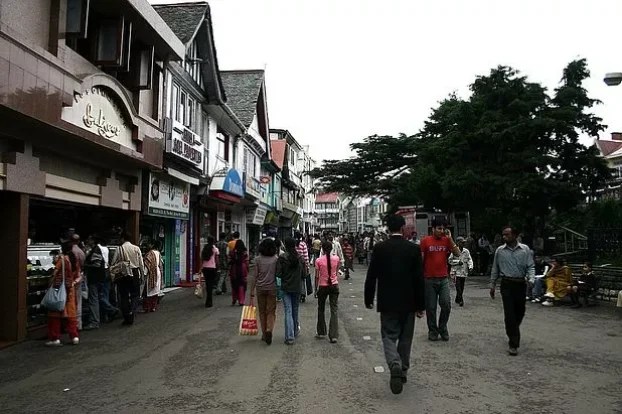From Shimla to Mussoorie, Nainital to Darjeeling — almost every famous hill station in India has one thing in common: a Mall Road. But have you ever stopped to wonder why these towns all seem to have a “Mall Road”? What does it really mean? Is it about malls like shopping complexes, or is there something more to it?
Let’s take a deep dive into the real meaning of Mall Road in India, its historical roots, and how its purpose has evolved over time.

What Does “Mall” Really Mean?
Contrary to popular belief, the term “Mall” doesn’t originate from modern shopping malls. In fact, the word dates all the way back to 17th century England, where it referred to a long, sheltered walkway or promenade — a place to take leisurely strolls, often in scenic or social settings.
Historical Origins
According to historical references, the word “Mall” comes from “Pall Mall” — a street in London named after a popular Italian game similar to croquet. Over time, “The Mall” came to mean a broad, tree-lined promenade, often in a military or colonial context.

Mall Road in British India: A Colonial Legacy
The Mall Road in India took shape during the British colonial era, specifically in the 18th and 19th centuries. These roads were developed primarily in cantonment areas, which were British military settlements.
Two Sides of the Road
In military terms, MALL actually stood for:
🟢 Married
🟢 Accommodation and
🟢 Living
🟢 Lines
Thus, Mall Roads were designed to divide military living areas:
- One side for married British officers, complete with bungalows, mess halls, and clubs
- The other side for barracks and administrative units for soldiers
This functional layout later became symbolic of the organized, scenic roads found in many hill stations.

The Role of Mall Roads in Indian Hill Stations
When you visit places like Shimla, Manali, or Dalhousie, Mall Road is usually the heart of the town — lined with cafes, souvenir shops, colonial-era buildings, and benches for people-watching. But why are they such an essential part of the townscape?
Mall Road as a Social & Commercial Hub
In hill stations, Mall Roads evolved into the town center — a place where:
- Locals and tourists gather for evening walks
- Major restaurants, shops, and bakeries are located
- Government offices like municipal headquarters and police stations are often situated
- Traffic is restricted or prohibited, making them pedestrian-friendly zones
This walking culture made Mall Roads vibrant places — ideal for shopping, conversations, and soaking in the town’s vibe.

Then vs. Now: The Changing Face of Mall Roads
While Mall Roads in hill stations have retained their charm, the story is a bit different in India’s urban cities.
Post-Independence Changes
After 1947, many Mall Roads in cities were renamed to honor national heroes — think:
- Mahatma Gandhi Road (MG Road)
- Jawahar Lal Nehru Marg
- Netaji Subhash Chandra Bose Road
Despite the name changes, locals often still refer to these roads as the “Mall Road” due to historical familiarity.
Rise of Modern Malls
In the last two decades, modern shopping malls have redefined the concept of public space and shopping in urban India. These air-conditioned complexes now offer a similar mix of food, fashion, and entertainment that traditional Mall Roads once did — but with escalators and multiplexes.
Still, the nostalgic value of old-school Mall Roads remains unmatched, especially in hill towns where people still prefer an evening walk under open skies over neon-lit interiors.

Why Do Mall Roads Still Matter Today?
In a digital, fast-paced world, Mall Roads offer a slower, more scenic experience. They’re not just roads — they’re cultural spaces, shaped by history, community, and leisure.
💡 Did you know? Many Mall Roads prohibit vehicles to preserve the peace, enhance pedestrian experience, and reduce pollution — long before “walkable cities” became a global urban trend!
Final Thoughts
The next time you find yourself walking down a Mall Road in India, remember — you’re not just walking on a street. You’re walking through layers of history, military legacy, colonial architecture, and a tradition of leisurely strolls that date back centuries.
Whether you’re sipping chai in Mussoorie, buying woolens in Manali, or people-watching in Nainital, the Mall Road is more than just a place — it’s a feeling.

Related Reads on Peddler Media:
- Top 10 Hill Stations in India to Visit in Summer
- Shimla’s Iconic Mall Road – A Visual Journey
- Delhi to Leh Bus Service by HRTC
Discover more from Peddler Media
Subscribe to get the latest posts sent to your email.















You must be logged in to post a comment.